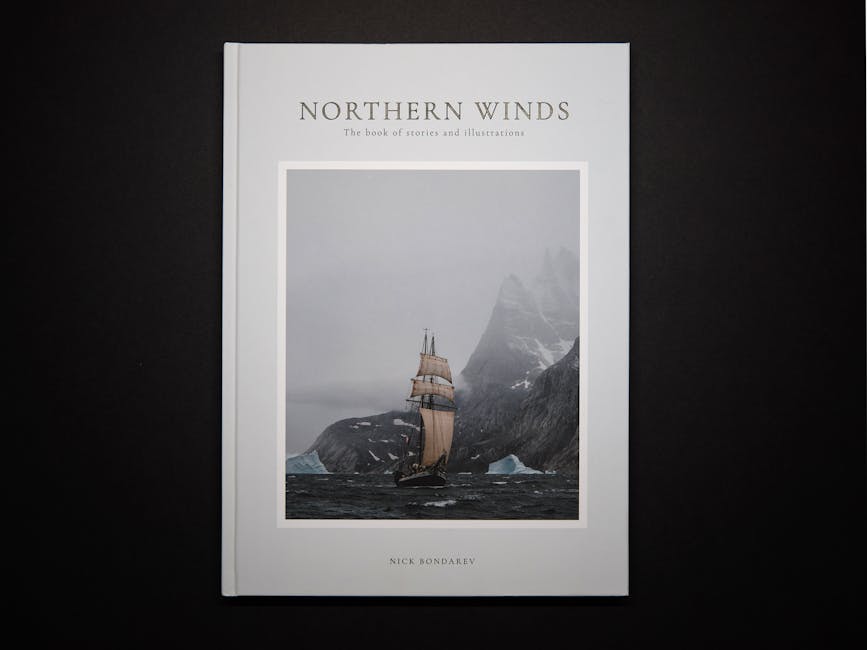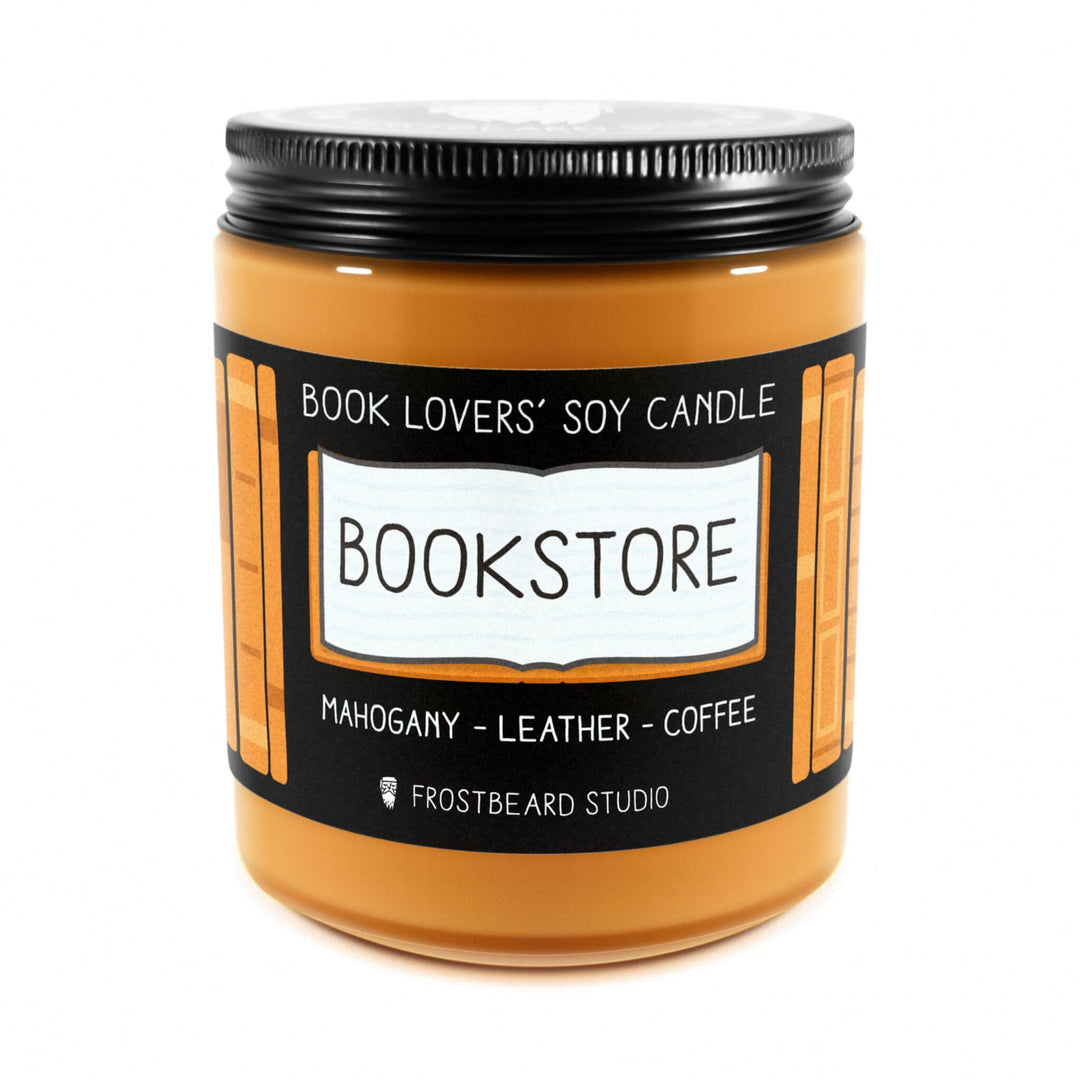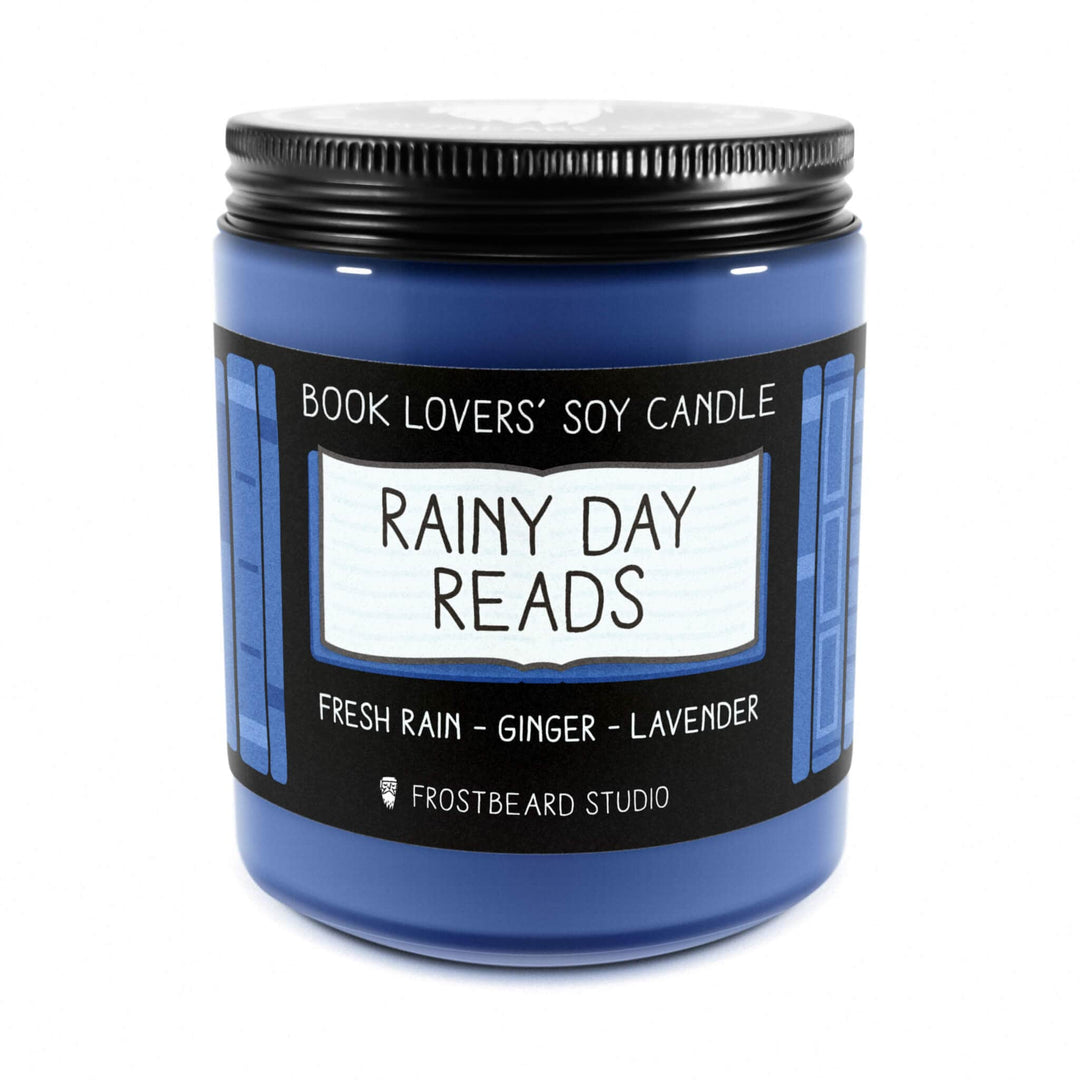Fantasy Book Covers: The First Impression Matters
Why First Impressions Matter for Fantasy Book Covers
When it comes to fantasy book covers, the first impression is everything. Readers often judge a book by its cover, especially in genres like fantasy where the visual appeal can make or break a sale. If you're in a hurry, here are the key elements that make a fantasy book cover stand out:
- Typography: Serif fonts with neat curls.
- Color Scheme: Bright hues, gradients, and various effects.
- Imagery: Strong main characters, magic artifacts, and mythical creatures.
Fantasy book covers are a gateway to the magical worlds within. They capture the imagination and set the tone for what readers can expect. A well-designed cover can make a powerful first impression, drawing readers into a story they won’t want to put down.
I've spent years studying book cover design and founded Frostbeard Studio to create products that improve the reading experience. Each element of a fantasy book cover—typography, color scheme, and imagery—plays a crucial role in catching a reader's attention and conveying the book's essence.

Quick fantasy book covers terms: - fantasy book map - best magic fantasy books - best fantasy book characters
Elements of a Good Fantasy Book Cover
Designing a fantasy book cover that stands out requires careful attention to three key elements: typography, color scheme, and imagery. These elements work together to create a cover that not only grabs attention but also conveys the essence of the story within.
Typography
Typography is more than just the text on the cover; it's a visual representation of the book's tone and genre. For fantasy book covers, serif fonts with neat curls are often the go-to choice. Fonts like Baskerville, Gothic, or Trajan add a touch of magic and sophistication, making them perfect for fantasy.
- Serif Fonts: These fonts have small lines or strokes regularly attached to the end of a larger stroke in a letter or symbol. They add a classic and timeless feel.
- Neat Curls: The curls and flourishes in serif fonts can evoke a sense of enchantment and mystique, which is ideal for fantasy genres.
Typography can also indicate a subgenre and set the mood. For example, larger, bold fonts might be used for epic fantasy, while more delicate, intricate fonts might suit a romantic fantasy.
Color Scheme
The color scheme of a fantasy book cover is crucial for setting the mood and attracting attention. Designers often use bright hues, gradients, and various effects to create a striking visual impact.
- Bright Hues: Colors like red, blue, and purple are popular in fantasy covers. Red can signify passion or danger, blue conveys faith and truth, and purple is linked to mystery.
- Gradients and Effects: Using gradients can add depth and dimension, making the cover more dynamic. Effects like shadows, glows, and textures can make elements pop and draw the eye.
Experimenting with tints and shades of a single color can also be effective. For instance, different shades of green can evoke a sense of renewal and balance, perfect for a nature-themed fantasy.
Imagery
Imagery is the heart of a fantasy book cover. It tells the reader what kind of world they are about to enter. Key elements often include:
- Main Characters: Depicting the protagonist with magical abilities, like wielding fireballs or lightning, can immediately convey the fantastical elements of the story.
- Magic Artifacts: Items like enchanted swords, mystical amulets, or ancient books can hint at the plot's central elements.
- Mythical Creatures: Dragons, fairies, and other mythical beings are staples in fantasy imagery. They add an element of wonder and intrigue.
The background can also play a significant role in setting the scene. For example, a cityscape might indicate urban fantasy, while castles and swords could suggest high fantasy.
By mastering these elements—typography, color scheme, and imagery—you can create a fantasy book cover that not only captures the eye but also the imagination of potential readers.

Next, let's explore the popular themes in fantasy book covers, including dragons, alien diplomats, and strange creatures.
Popular Themes in Fantasy Book Covers
Fantasy book covers often feature recurring themes that instantly signal the genre to potential readers. Here are three popular themes that you might encounter:
Dragons
Dragons are a staple in fantasy literature and their presence on a book cover can immediately evoke a sense of grandeur and trip. These majestic creatures symbolize power, mystery, and often, a formidable challenge the protagonist must face.
- Battle Scenes: Covers might depict epic battles between dragons and warriors, highlighting the action and intensity of the story. The use of dynamic poses and fiery backgrounds can make these scenes pop.
- Majestic Creatures: Sometimes, a dragon might be shown in a more serene, majestic pose, perhaps perched on a mountain or flying through the sky. This can emphasize the mythical and awe-inspiring nature of these creatures.

Alien Diplomats
Alien diplomats introduce a blend of science fiction and fantasy, creating a unique and intriguing setting. These covers often feature elements that hint at interplanetary politics and futuristic technology.
- Interplanetary Peace: Covers might show alien diplomats engaged in negotiations or alliances, set against a backdrop of stars and planets. This can convey themes of unity and conflict resolution.
- Futuristic Elements: Advanced technology, like holograms or sleek spaceships, often appears on these covers to signal the sci-fi aspect of the story. Combining these with more traditional fantasy elements can create a visually striking and unique cover.

Strange Creatures
Strange creatures are another common theme in fantasy book covers. These beings, whether they are mythical, magical, or entirely original creations, add an element of wonder and curiosity.
- Cohabitation with Humans: Covers might show humans and strange creatures living together, interacting in a way that hints at the story's unique world-building. This can include anything from fairies in a modern city to centaurs in a medieval village.
- Unique Designs: Designers often go all out with imaginative and unique designs for these creatures, making them stand out and grab attention. Bright colors, unusual shapes, and intricate details can make these covers unforgettable.

These themes—dragons, alien diplomats, and strange creatures—are not just eye-catching but also give potential readers a glimpse into the fantastical worlds contained within the pages. By incorporating these elements thoughtfully, you can create a book cover that not only attracts attention but also sets the right expectations for your story.
How to Get Ideas for Fantasy Book Covers
Creating a fantasy book cover that captivates readers is both an art and a science. Here are some ways to get inspired and generate ideas for your next book cover.
Epic Fantasy Prompts
Epic fantasy prompts can help you brainstorm unique and compelling cover ideas. These prompts often draw from grand themes and mythical elements. Here are a few to get you started:
-
Gods of Elements: Imagine a scene where gods representing fire, water, earth, and air are in a cosmic battle. This could translate into a cover with vibrant, contrasting colors and dynamic poses.
-
Dragon Fight Clubs: Picture a secret underground arena where dragons battle for supremacy. The cover could feature intense action scenes, with dragons locked in combat, surrounded by a cheering crowd.
Creative Inspiration
Sometimes, the best ideas come from thinking outside the box. Here are some creative prompts to spark your imagination:
-
Long-Lost Shipwrecks: Envision a cover showing an ancient shipwreck, overgrown with mystical seaweed and guarded by mermaids or sea monsters. This can evoke a sense of mystery and trip.
-
Resurrection Wishes: Think about a character making a wish to bring someone back from the dead. The cover could depict a hauntingly beautiful scene with glowing orbs or spirits rising from the ground, hinting at the magical and emotional stakes of the story.
For more visual inspiration, you can explore Pinterest Fantasy Book Covers to see stunning examples of illustrated and custom covers.
By using epic fantasy prompts and creative inspirations, you can craft a book cover that not only stands out but also perfectly encapsulates the essence of your story.
Next, we'll dive into some of the most beautiful fantasy book covers and what makes them so captivating.
Top 10 Most Beautiful Fantasy Book Covers
The cover of a book is often the first thing a reader notices. A beautiful cover can captivate and draw them into the story before they even read the first page. Here, we'll explore some of the most stunning fantasy book covers that have left a lasting impression on readers.
Anna Karenina
Though not traditionally a fantasy book, some editions of Anna Karenina feature exquisite cover designs that evoke a sense of classic beauty and elegance. These covers often use classic design elements, such as intricate typography and vintage illustrations, to capture the timeless nature of the story.
A Little Princess
The Fox and the Star by Coralie Bickford-Smith is a perfect example of how a book cover can be a work of art. The cover features a minimalist design with a deep blue background and a shining silver fox. The neat typography and whimsical illustrations make it an eye-catching piece that stands out on any bookshelf.
Tales of the Peculiar
Ransom Riggs' Tales of the Peculiar boasts a cover that is both eerie and enchanting. The design includes magical imagery, such as peculiar characters and mystical artifacts, that hint at the strange and unusual stories within. The use of gold foil and intricate detailing adds a touch of elegance to the overall design.
The Strange and Beautiful Sorrows of Ava Lavender
Leslye Walton's The Strange and Beautiful Sorrows of Ava Lavender features a cover that is as hauntingly beautiful as its title. The cover showcases a delicate feather with a gradient of colors, from deep blue to shimmering gold. This whimsical element perfectly captures the ethereal and magical nature of the story.
The Sun Is Also a Star
Nicola Yoon's The Sun Is Also a Star has a vibrant and colorful cover that immediately draws the eye. The design features a burst of bright hues and intricate lines that seem to radiate from the center, symbolizing the interconnectedness of the characters' lives. The color scheme is both bold and beautiful, making it a standout cover.
A Room with a View
E.M. Forster's A Room with a View may not be a typical fantasy novel, but some editions feature covers that transport readers to another time and place. These covers often use classic design elements, such as neat fonts and picturesque landscapes, to evoke a sense of nostalgia and romance.
The Night Circus
Erin Morgenstern's The Night Circus is known for its enchanting cover design. The cover features a black and white color scheme with pops of red, creating a sense of mystery and magic. The whimsical elements and magical imagery, such as circus tents and performers, perfectly capture the fantastical world of the story.
By exploring these beautifully designed book covers, we can see how important visual appeal is in capturing a reader's attention and conveying the essence of a story. A well-designed cover is not just an accessory; it's an integral part of the book's identity.
Frequently Asked Questions about Fantasy Book Covers
What makes a good fantasy cover?
A good fantasy book cover grabs attention and hints at the story within. Three key elements make this happen: typography, color scheme, and imagery.
Typography: Fonts set the tone. Serif fonts with neat curls, like Baskerville or Trajan, are popular. They add a classic, magical feel. Size and color matter too. The title should match or contrast the palette, guiding the reader's eye.
Color Scheme: Fantasy covers often use bold, saturated colors. Think vibrant reds for danger or passion, purples for mystery, and blues for faith and truth. Gradients and special effects can add depth and allure.
Imagery: The visuals should tell a story. Protagonists with magical artifacts, mythical creatures, and supernatural phenomena are common. Backgrounds can hint at the subgenre—urban settings for urban fantasy, castles for high fantasy.
Do fantasy books have themes?
Yes, fantasy books often explore specific themes. Here are a few popular ones:
Dragons: These majestic creatures symbolize power and mystery. Covers might show dragons in battle scenes or soaring majestically.
Alien Diplomats: For sci-fantasy, alien diplomats and futuristic elements hint at interplanetary peace and complex political landscapes.
Strange Creatures: Unique beings cohabitating with humans add intrigue. Covers might feature these creatures in everyday settings, emphasizing their uniqueness.
How do I get an idea for a fantasy book?
Finding inspiration for a fantasy book cover can be challenging. Here are some tips:
Epic Fantasy Prompts: Think about grand ideas like gods of elements or dragon fight clubs. These concepts can shape the cover's imagery and theme.
Creative Inspiration: Look at long-lost shipwrecks or resurrection wishes for unique story angles. These elements can guide the design and color scheme.
By focusing on these aspects, you can create a fantasy book cover that not only catches the eye but also tells a story, drawing readers into the magical world you've created.
Conclusion
At Frostbeard Studio, we believe that reading is more than just an activity—it's an experience. A well-designed fantasy book cover can be the key to open uping that immersive experience. But how can you improve this experience even further?
Imagine curling up with your favorite fantasy novel, the cover already hinting at the magical journey inside, and lighting a candle that complements the story’s atmosphere. Our literary-inspired candles are designed to do just that.
Enhancing Your Reading Experience
Our candles are crafted to evoke the essence of different literary themes and settings, adding a sensory layer to your reading journey. For example:
- "Wizard's Library": Perfect for diving into the magical world of Harry Potter, enhancing the theme of good vs. evil.
- "Sherlock's Study": Ideal for mystery novels, bringing the essence of intrigue and intellect to your reading nook.
- "Old Books": A scent that complements any classic literature, making themes of love, loss, and trip even more poignant.
Transform Your Reading Nook
With Frostbeard Studio’s products, your reading nook becomes a sanctuary. Lighting a candle not only sets the mood but also helps you connect more deeply with the characters and their journeys. The right scent can make plot twists more thrilling and emotional moments more touching.
Explore our collection of literary-inspired candles and transform your reading experience today. Let the power of fragrance bring your favorite books to life, creating a truly unforgettable literary journey.
Happy reading, and may your journeys in fantasy be filled with magic and wonder!








